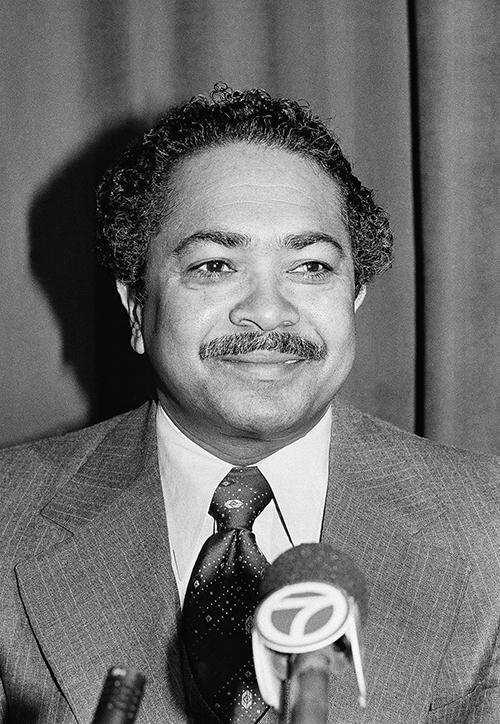
When Mervyn Dymally passed away last October, he left behind an amazing legacy in his home state of California.
Dymally was a groundbreaking politician who served in the California State Assembly (twice—once in the ’60s and once in the 2000s), the California State Senate and the U.S. House of Representatives, and as the Lieutenant Governor of California; he was the first African-American elected to statewide office in California.
Dymally will be the subject of a discussion led by Dr. Hillary Jenks, an assistant professor in the PSU University Honors program, to be held this Friday.
The discussion, titled “Mervyn Dymally and the Politics of Suburban Multiracialism in Reagan-era Southern California,” is sponsored by the Portland Center for Public Humanities as part of its Faculty Lunch and Lecture Series.
The discussion will focus primarily on the work Dymally did in the 1980s while serving in the U.S. House. Dymally was involved in several important legislative acts, including supporting legislation that provided reparations for Japanese-Americans placed in internment camps.
Jenks, who has been at Portland State since 2008, became familiar with Dymally while developing her dissertation into a book. The book looks at racially inscribed spaces across the 20th century and their role in shaping metropolitan development.
Initially, Jenks was studying Gardena, which is a suburb located in the South Bay area of Los Angeles and a part of the area that Dymally represented. The South Bay is the center of the area’s aerospace economy.
During the 1950s and ’60s, Japanese-Americans and African-Americans began buying homes in Gardena and Compton. By the ’70s, the two suburbs began to experience very different changes.
Compton experienced massive “white flight” and disinvestment that led to a decline in what had once been a very promising community. By contrast, Gardena benefitted from Japanese corporate investment and balanced diversity.
When Dymally was elected to the House in 1980, he was in a unique position to address these opposing situations. Dymally was an immigrant from Trinidad of mixed Afro-Trinidadian and Indo-Trinidadian heritage.
“He was always very clear that [he] identified with both African-American and Asian-American [heritage],” Jenks said. “That area of the South Bay had a large African-American population and a very large Japanese-American population.
Mervyn Dymally and the Politics of Suburban
Multiracialism in Reagan-era Southern California
As part of the Faculty Lunch and Lecture Series
Friday, March 15, noon
Neuberger Hall, room 407
Free and open to the public
RSVP to publichumanities@pdx.edu
The event will be a formal discussion of Jenks’ work and research on Dymally. She will discuss that in relation to other work that has been done on the east side of LA, particularly the Boyle Heights area, which in the 1940s had large Latino, Japanese-American and Jewish populations.
With the onset of McCarthyism in the ’50s and its attendant climate of fear and distrust, many of these minority groups found themselves in situations in which it felt safer to go their own way, which greatly decreased the area’s diversity.
Jenks finds Dymally compelling because of his ability to bridge these potentially large cultural divides.”
“He’s kind of this unusual figure in that in the very early moment when you see this urban diversity, he was kind of the perfect figure to represent that,” Jenks said.

